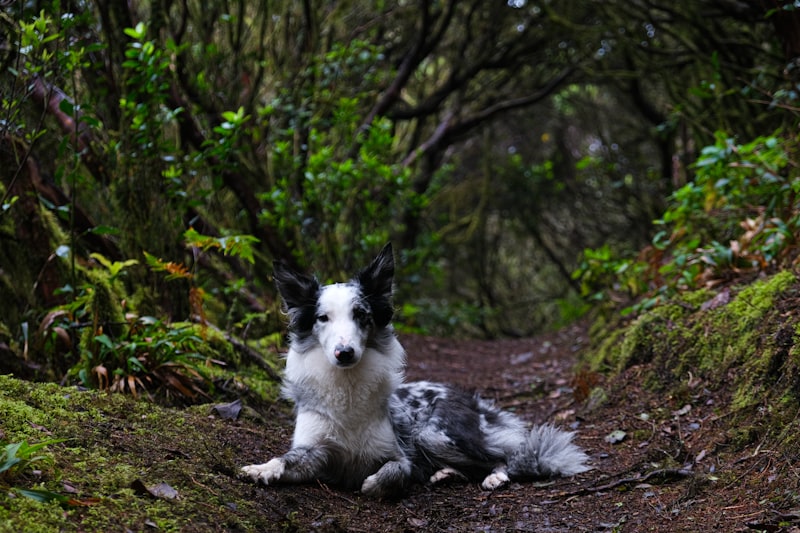Have you ever marveled at the astonishing abilities of animals? From problem-solving squirrels to tool-using crows, animal intelligence continues to fascinate researchers and animal lovers alike. Understanding animal intelligence goes beyond mere instinct; it delves into the realms of complex cognition and adaptive behavior.
Animals exhibit intelligence in various forms, often tailored to their environments and survival needs. Take the octopus, for instance, known for its mastery of camouflage and ability to solve intricate puzzles. These creatures not only adapt their appearance to blend seamlessly with surroundings but also demonstrate memory and learning capabilities that rival some primates.
In the avian world, crows are celebrated for their ingenious tool-making skills. They fashion tools from twigs and leaves to extract insects from hard-to-reach places—a feat that requires foresight and problem-solving abilities. Such behaviors suggest that intelligence in animals isn’t limited to mammals but extends across different species, each with unique cognitive adaptations.
Even domesticated animals like dogs showcase remarkable intelligence through social cognition. They understand human gestures, respond to commands, and even display empathy towards their human companions. This bond between humans and dogs highlights not just intelligence but also emotional intelligence, a trait increasingly recognized in various animal species.
Moreover, studies on animal communication reveal sophisticated systems that include complex vocalizations, body language, and even chemical signals. Dolphins communicate through intricate clicks and whistles, showcasing a level of linguistic complexity that parallels human languages in some respects.
In essence, exploring animal intelligence opens windows into evolutionary biology and cognitive science. It challenges our understanding of what it means to be intelligent and prompts us to appreciate the diverse ways life on Earth has adapted to its surroundings. As we continue to study and learn from animals, we gain deeper insights into our own cognitive evolution and the interconnectedness of all living beings.
Decoding the Minds of Animals: Unraveling the Mysteries of Animal Intelligence
Animals, much like humans, exhibit a wide range of cognitive capabilities that allow them to navigate their environments, communicate with others, and even demonstrate empathy. Take, for instance, the remarkable memory of elephants. These gentle giants can remember watering holes and migration routes over vast distances and many years, showcasing their ability to retain complex spatial information.
In the avian world, crows are renowned for their problem-solving skills. These birds can fashion tools out of twigs and leaves to extract food from hard-to-reach places, demonstrating a level of ingenuity previously thought to be exclusive to humans. Such feats challenge our understanding of intelligence and open new avenues for research into animal behavior.
Moreover, the social dynamics within animal communities reveal a depth of emotional intelligence that parallels human interactions. Wolves, known for their intricate pack structures, exhibit cooperation and communication strategies that ensure their survival in challenging environments. Their ability to coordinate hunts and care for injured pack members underscores the importance of social bonds in the animal kingdom.
But perhaps most intriguing are the cognitive similarities between humans and primates, particularly chimpanzees and bonobos. These close relatives share not only a significant percentage of DNA with us but also exhibit problem-solving abilities, tool usage, and complex emotional responses. Studying these primates sheds light on the evolutionary origins of human intelligence and social behavior.
As we continue to decode the minds of animals, we gain a deeper appreciation for the diversity and complexity of life on Earth. Each species offers unique insights into the evolution of intelligence, challenging us to rethink our place in the natural world and inspiring new ways to conserve and protect these extraordinary creatures.
From Instinct to Insight: How Animals Showcase Cognitive Abilities
Animals, from the smallest insects to the most majestic mammals, often surprise us with their cognitive abilities. Beyond mere instinct, many species exhibit complex behaviors that hint at deeper levels of intelligence and problem-solving skills.
Take the example of chimpanzees, our closest relatives in the animal kingdom. These primates not only use tools but also fashion them for specific purposes, such as extracting termites from mounds using sticks. This behavior showcases not just learned behavior but also an understanding of cause and effect—a cognitive leap beyond basic survival instincts.
Dolphins, known for their social complexity and communication skills, engage in cooperative hunting strategies that require coordination and planning. Their ability to work together to herd fish into tighter groups demonstrates a sophisticated level of understanding and communication among individuals.
Birds like crows and ravens are renowned for their problem-solving skills. They can fashion tools from materials like sticks and even use them in novel ways to obtain food. This ability suggests foresight and planning, qualities previously attributed only to humans.
Even insects, with their tiny brains, exhibit remarkable cognitive feats. Honeybees, for instance, communicate the location of food sources through intricate dances—a form of symbolic language that indicates a sophisticated level of cognitive processing.
These examples highlight that cognitive abilities in animals are not limited to a few exceptional cases but are widespread across diverse species. They challenge our understanding of intelligence and remind us that the line between instinct and insight may be blurrier than we once thought.
The Evolution of Animal Smarts: Insights into Intelligent Behavior
Animals exhibit a wide range of intelligent behaviors that are finely tuned to their environments. Take the example of crows, known for their problem-solving skills. These birds can use tools to obtain food, a behavior once thought to be exclusive to humans. They demonstrate planning and reasoning abilities that are crucial for navigating complex situations in their quest for survival.
Dolphins, too, provide a compelling case study in animal intelligence. These marine mammals are not only highly social but also display advanced communication skills. They use a sophisticated system of clicks and whistles to coordinate hunting strategies and maintain social bonds within their pods. Such behaviors underscore the evolutionary advantage of intelligence in fostering cooperation and adaptation.
In the world of primates, chimpanzees stand out for their cognitive abilities, which rival those of young children. They can learn to use sign language, solve puzzles, and even demonstrate a rudimentary understanding of numbers. These traits highlight the evolutionary continuity between humans and our closest relatives, showcasing the gradual development of cognitive abilities over millennia.
The evolution of animal smarts isn’t just limited to vertebrates. Octopuses, with their complex nervous systems, exhibit problem-solving skills and can even use camouflage to evade predators or ambush prey. Their ability to adapt to different environments and use their intelligence for survival underscores the diverse paths that evolution can take in shaping cognitive abilities.
Do Animals Reason? Exploring the Depths of Animal Intelligence
Have you ever wondered if animals possess reasoning abilities similar to humans? The question of whether animals can reason opens up a fascinating exploration into the depths of animal intelligence. While they may not articulate their thoughts in words or solve complex mathematical equations, many animals exhibit behaviors that suggest a level of reasoning.
Take chimpanzees, for example. These primates are known for their problem-solving skills, using tools to obtain food and even strategizing in social interactions. When faced with a challenge, chimpanzees often exhibit trial-and-error learning, adjusting their approach until they achieve their goal. This ability to adapt and learn from experience indicates a form of reasoning based on past outcomes.
Dolphins, too, showcase remarkable intelligence through their communication and social behaviors. These marine mammals use a sophisticated system of clicks and whistles to communicate with one another, displaying not only language-like abilities but also cooperative hunting strategies. Their capacity to coordinate and communicate effectively suggests a high level of cognitive processing.
In the avian world, crows have gained attention for their problem-solving prowess. These birds are known to use tools creatively, such as bending wires to extract food from hard-to-reach places. Crows also demonstrate an understanding of cause and effect, as they modify their tools based on the task at hand. This behavior indicates a form of reasoning that allows them to adapt their methods to new challenges.

Even domesticated animals like dogs exhibit reasoning abilities in their daily interactions. From learning commands to recognizing patterns in their environment, dogs show an ability to make decisions based on past experiences. Their capacity to understand human gestures and follow instructions further highlights their cognitive flexibility.
While the extent of animal reasoning may differ from that of humans, studying these behaviors offers insights into the diversity of cognitive abilities across species. By exploring how animals reason, scientists gain a deeper appreciation for the intelligence that exists beyond our own species, shedding light on the evolutionary pathways that have shaped diverse forms of cognitive processing.
This article aims to engage readers by highlighting examples of animal intelligence and prompting them to consider the parallels and differences between human and animal reasoning abilities.
Beyond Human Eyes: Perceiving the World Through Animal Intelligence
Have you ever wondered what the world looks like through the eyes of animals? It’s a fascinating glimpse into a realm where senses shape reality in ways beyond our comprehension. Animal intelligence allows them to perceive their environment with astonishing clarity and purpose.
Take the eagle, for example. With its keen eyesight, it can spot prey from high above with precision that rivals any high-definition camera. The world unfolds beneath its wings in vivid detail, every movement and texture a canvas of survival and opportunity.
Or consider the dolphin, navigating the ocean depths with echolocation. Through clicks and whistles, it creates a mental map of its surroundings, detecting obstacles and prey with an accuracy that defies the darkness of the deep.
Even creatures closer to home, like dogs and cats, experience the world through heightened senses of smell and hearing. A dog’s nose can detect scents imperceptible to humans, painting a picture of the past and present through a tapestry of odors. Cats, with their sensitive whiskers and acute hearing, perceive a world of subtle vibrations and delicate sounds that escape our notice.
These examples illustrate not just the diversity of animal senses, but the profound ways in which intelligence adapts to different environments. From the microscopic world of insects to the vastness of the savannah, each species interprets reality through a lens shaped by evolution and necessity.
Understanding animal intelligence opens doors to new insights about our own place in the natural world. It challenges us to reconsider what it means to perceive and interact with our surroundings. As we unravel the mysteries of animal cognition, we gain a deeper appreciation for the richness and complexity of life on Earth.
Exploring the world through animal intelligence reveals a tapestry of senses and perceptions that expand our understanding of consciousness itself. It invites us to marvel at the diversity of life forms and the remarkable ways in which they navigate their existence.
The Language of Animals: Communicative Powers and Social Cognition
From the majestic elephants of the African savannah to the tiny ants building intricate colonies, animals utilize a variety of methods to convey messages and maintain social order. Take bees, for instance. These buzzing wonders perform intricate dances to communicate the location of food sources to their hive mates. It’s like having a built-in GPS and dance floor combined!
Birds, on the other hand, are renowned for their melodic tunes. But did you know each chirp isn’t just a song? It’s a conversation—a complex language that warns of danger, marks territory, or attracts potential mates. It’s like attending a music festival where every note tells a story.
Even underwater, marine mammals like dolphins and whales engage in sophisticated conversations using clicks, whistles, and body language. These aquatic virtuosos can communicate over vast distances, coordinating hunts or sharing social updates in their own watery world.

Beyond verbal cues, animals display remarkable social cognition—the ability to understand and navigate social structures. Wolves, for example, operate in hierarchical packs where every howl and gesture communicates dominance or submission. It’s like a corporate boardroom where body language speaks louder than words.
And let’s not forget our closest relatives, the primates. Chimpanzees exhibit behaviors such as grooming, sharing food, and resolving conflicts—skills that mirror our own social interactions. They even use tools to solve problems, proving that communication isn’t just about language but also about intelligence and adaptation.
In essence, the language of animals isn’t just about sounds; it’s a rich tapestry of gestures, postures, and vocalizations that convey emotions, needs, and complex social dynamics. By understanding their communicative powers and social cognition, we gain insight into the diversity of life on Earth—a symphony where every species has its own unique voice, contributing to the harmony of the natural world.
Tools, Tactics, and Tricks: Surprising Ways Animals Display Intelligence
Ever wondered how animals exhibit their cleverness in unexpected ways? From crafting tools to employing complex tactics, animals constantly surprise us with their intelligence. Let’s dive into some fascinating examples that highlight their cognitive abilities.
Take the humble octopus, for instance. Known for their dexterity, octopuses are masters of tool use. They’ve been observed collecting coconut shells and using them as portable shelters. This ingenious behavior not only showcases their problem-solving skills but also their ability to adapt to different environments.
Birds, too, demonstrate remarkable intelligence through tactical maneuvers. Crows, in particular, are known for their strategic thinking. They’ve been observed using cars to crack open nuts by placing them in the path of traffic. This not only highlights their ability to use external tools but also their understanding of cause and effect.
In the animal kingdom, deception is also a powerful tool. Consider the cunning behavior of the orchid mantis, which mimics the appearance of a flower to attract prey. This camouflage not only helps them evade predators but also enhances their hunting success by luring unsuspecting insects.
Elephants exhibit a sophisticated level of social intelligence. They communicate over long distances using infrasound, a low-frequency sound that travels through the ground. This form of communication allows them to coordinate group activities such as migration or warn others of danger.
From the planning prowess of chimpanzees to the problem-solving skills of dolphins, animals continually astound researchers with their cognitive abilities. These examples not only highlight their intelligence but also challenge our understanding of what it means to be smart in the animal kingdom.
This article explores various aspects of animal intelligence while maintaining a conversational tone and engaging the reader with intriguing examples and insights.
Frequently Asked Questions
Can animals learn from each other?
Animals can indeed learn from each other. This process, known as social learning, allows animals to acquire new behaviors, skills, or information by observing and imitating others within their species or even across different species.
What is animal intelligence and how is it measured?
Learn about animal intelligence and how scientists measure it. Discover methods used to assess cognitive abilities in various species, shedding light on their problem-solving skills, memory capabilities, and social behaviors.
How do researchers study intelligence in animals?
Discover how researchers study animal intelligence through behavioral observations, cognitive tests, and neuroscientific techniques to understand complex cognitive abilities in various species.
Which animals are known for their intelligence?
Discover which animals are recognized for their intelligence and learn about their remarkable cognitive abilities.
How does animal intelligence compare to human intelligence?
A comparison of animal intelligence to human intelligence explores differences and similarities in cognitive abilities across species. It examines varying capacities for problem-solving, communication, and learning, highlighting distinct evolutionary adaptations and neural complexities.


